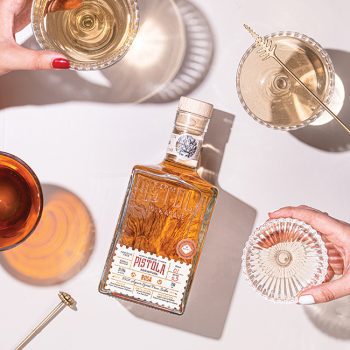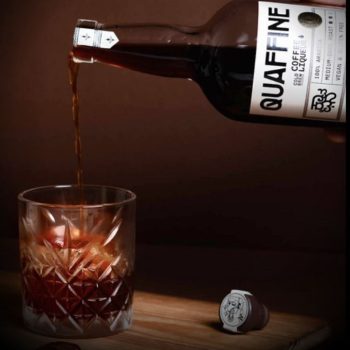Diageo India bets on agave spirits and rum
The chief innovation officer of Diageo India discusses the “massive” growth potential for agave spirits and why rum will be the next spirit to boom.

Diageo is the majority shareholder of India’s United Spirits, which diversified its portfolio of local brands by investing in categories such as agave spirits and coffee liqueurs this year.
The company has been on a mission to reshape its portfolio to improve profitability, offloading 32 brands from its Popular division in May 2022. Among them were Indian whiskies Haywards and Old Tavern, White Mischief vodka, Honey Bee brandy, Green Label whisky and vodka-based spirit drink Romanov.
Several months earlier, United Spirits began its process of investing in ‘craft-orientated’ products, buying a 22.5% stake in Nao Spirits, producer of Indian gins Greater Than and Hapusa, for INR 31.5 crores (US$4.1 million). Diageo also created Indian single malt whisky Godawan that year, with the aim of putting the country on the world stage.
In 2024, United Spirits purchased minority stakes in the maker of Indian agave spirit Maya Pistola, alcohol-free producer V9 Beverages and Indie Brews & Spirits, which launched coffee liqueur brand Quaffine in 2022. The investments in V9 and Indie Brews were completed last month.
Vikram Damodaran, chief innovation officer of Diageo India, believes the long-term growth trajectories for its recent brand investments are “promising”.
As for other reasons to back the brands, Damodaran highlights the “diversity in geography and terroir of India”, where coffee is endemic and agave can be grown in certain parts of the country.
Maya Pistola is a 100% agave spirit made with eight- to 10-year-old wild agave Americana that grows in India’s Deccan Plateau, where its rich volcanic soil is described as the perfect environment for growing the blue-green agave.
The company recently kickstarted initiatives around Diageo Ventures in India, an investment arm for startup brands.
Damodaran adds: “These are opportunities for us to bring artisanal craftsmanship from other makers to life and put them on a global platform.
“We are by far the largest alcohol company in India. And if we don’t take the initiative to create this platform for small startups, to be able to showcase what they can offer to the world, then it’s going to be very difficult to nurture that ecosystem, it will always end up being large companies doing mass stuff.

“If we have to really build a strong foundation for good quality Indian craft spirits, then a company like Diageo has to take the lead to create that platform. That’s exactly what we’ve done with our investments here.”
Two years ago, Diageo launched a platform called The Good Craft Company, which Damodaran describes as an “experience platform”.
Last month, the company opened its first sensorial experience home, The Flavour Lab by The Good Craft Co, in Bangalore to promote Indian craft spirits.
Diageo also operates a craft distillery in Goa called Ponda, which produces innovations from The Good Craft Company, including Godawan.
“We also serve as a boot camp for the startups – we give them free time, mentorship time,” he explained. “I spend time with a lot of startups, grooming them on product quality, on the chemistry of the product, and even helping them with designing manufacturing lines.”
Damodaran says The Good Craft Co “acts as a community that not only nurtures external companies, but also acts as that platform that drives PR and advocacy for the good work happening, especially in the startup ecosystem in India”.
Tequila and gin in ‘massive growth’
Speaking about the potential of other categories in India beyond whisky, Damodaran notes the company is looking at “common spirit styles”.
“In India, the most prevalent one is whisky,” he explains. “So if I were to look at the entire spirit consumption in the country, 90% of that salience will rest in whisky, 10% is going to be divided among all of the spirits that we know of [such as] rum, gin, vodka, Tequila.
“But having said that, the flip side of that is because repertoire behaviour is growing. And because you’re seeing a new influx of consumers, you will now start seeing that 10% growing over time,” he adds, noting Tequila and gin are seeing “massive growth” in India, while rum is also on the up.
“Agave spirits is a new category; it will take time,” he says. “So in terms of overall numbers [agave is] very small, but in terms of presentation, storytelling, and the ability to really present a new experience to consumers, [there is a] massive opportunity. So I think we’ll have to take measured bets, because I don’t think we can do everything at once.”
Since Maya Pistola’s launch in 2021, it has become one of the top emerging premium agave brands in India, United Spirits said at the time of its investment.

Gin boom paves the way for rum
On the growth of gin in India, Damodaran recalls the explosion in microbreweries more than a decade ago, which introduced local consumers to ‘craft’ products.
“Rewind about 12 years, Bangalore had two microbreweries – today it has about 100 microbreweries. India is now somewhere at about 1,000 microbreweries, which is still one-tenth of where the US is,” he says.
He believes the boom in microbreweries led to the craft boom in spirits, with gin being “the first one off the block”.
“Nao Spirits, the company that we invested in, started off their journey about nine years ago. And they were the ones who popularised craft gin but following them, as of last count, there are 100 different gin companies in India. [There’s a] huge, huge affinity for gin, because it’s also a story that’s fairly well connected to India, given the history of gin and tonic in India, but more importantly, the origin of botanicals, the herbs that go into the making of a good gin.”
He now believes rum is following in gin’s footsteps.
“When I start looking at the advent of craft rums in the country, there’s about 10, and it’s still growing,” he says. “But again, exactly like the gin story, people are now beginning to talk about provenance and terroir and ingredients going into the making of rum – so I believe it is a wave.
“Every time there’s a wave, the wave dies, and then the next spirit starts its wave. I think what we’ve seen is the gin wave; I would believe the gin wave has kind of reached its crescendo, which is why you’re seeing the rum wave beginning.
“I’m sure gin will come back with new styles and new offerings. But the good news is the wave is here to stay, that these waves of craft will keep happening over time as more and more consumers come into the drinking spectrum.”
Related news
Emanuele Mensah on winning Diageo World Class GB
